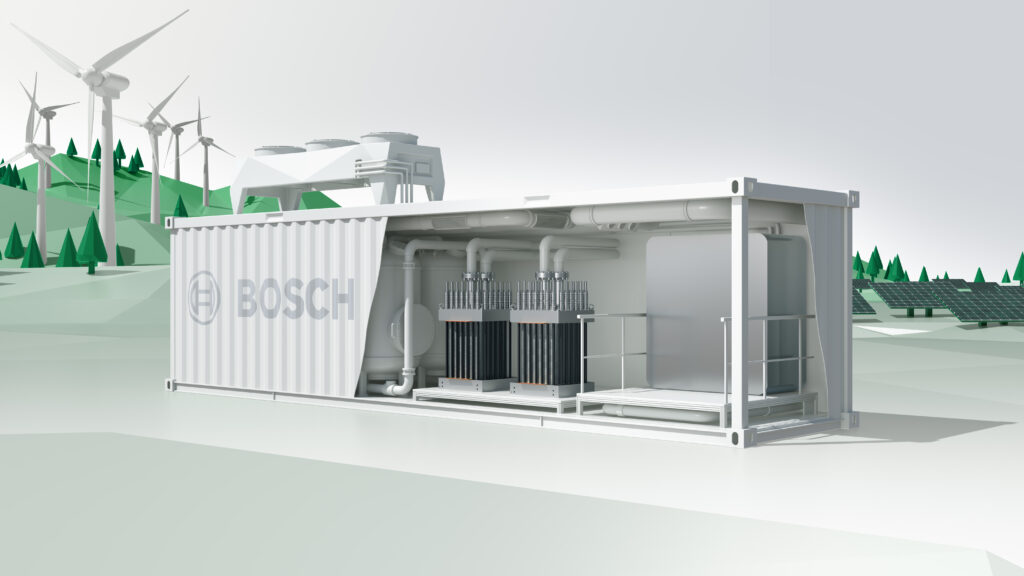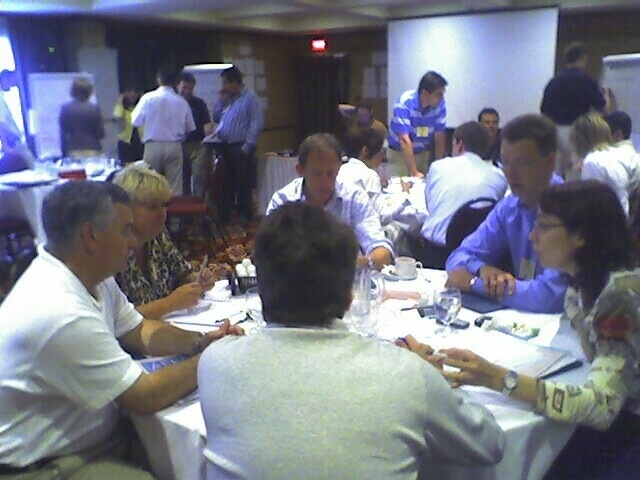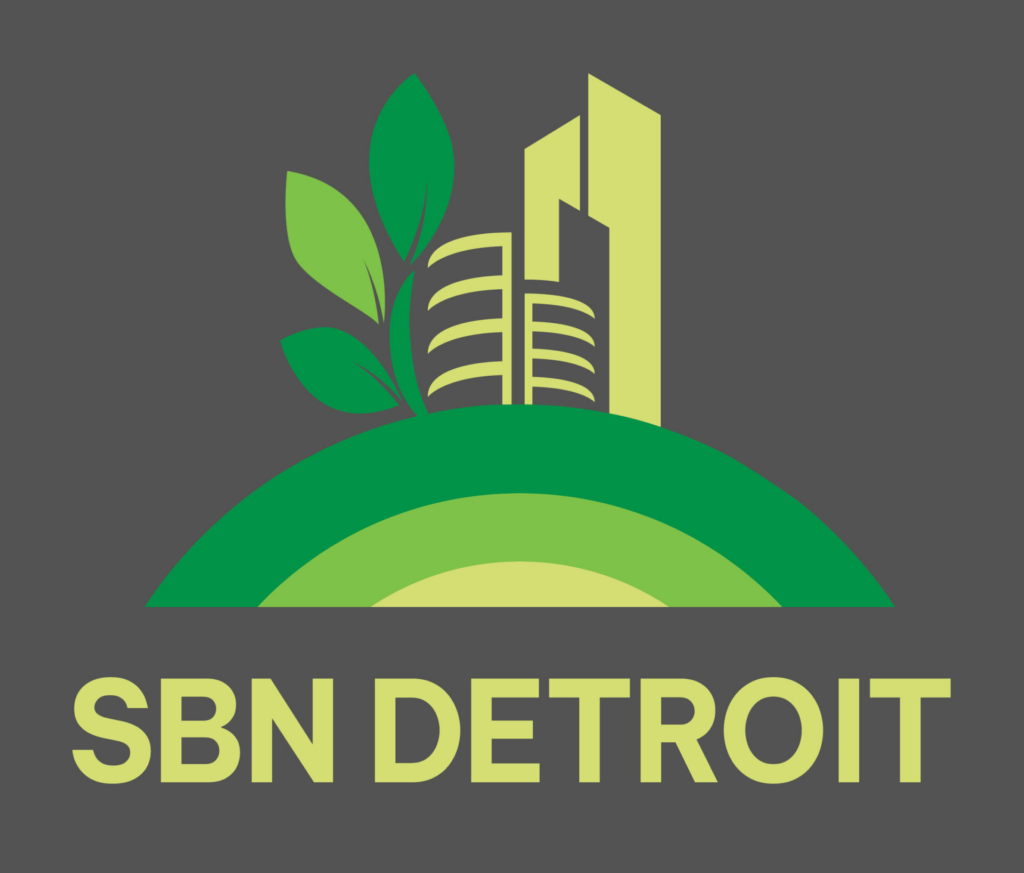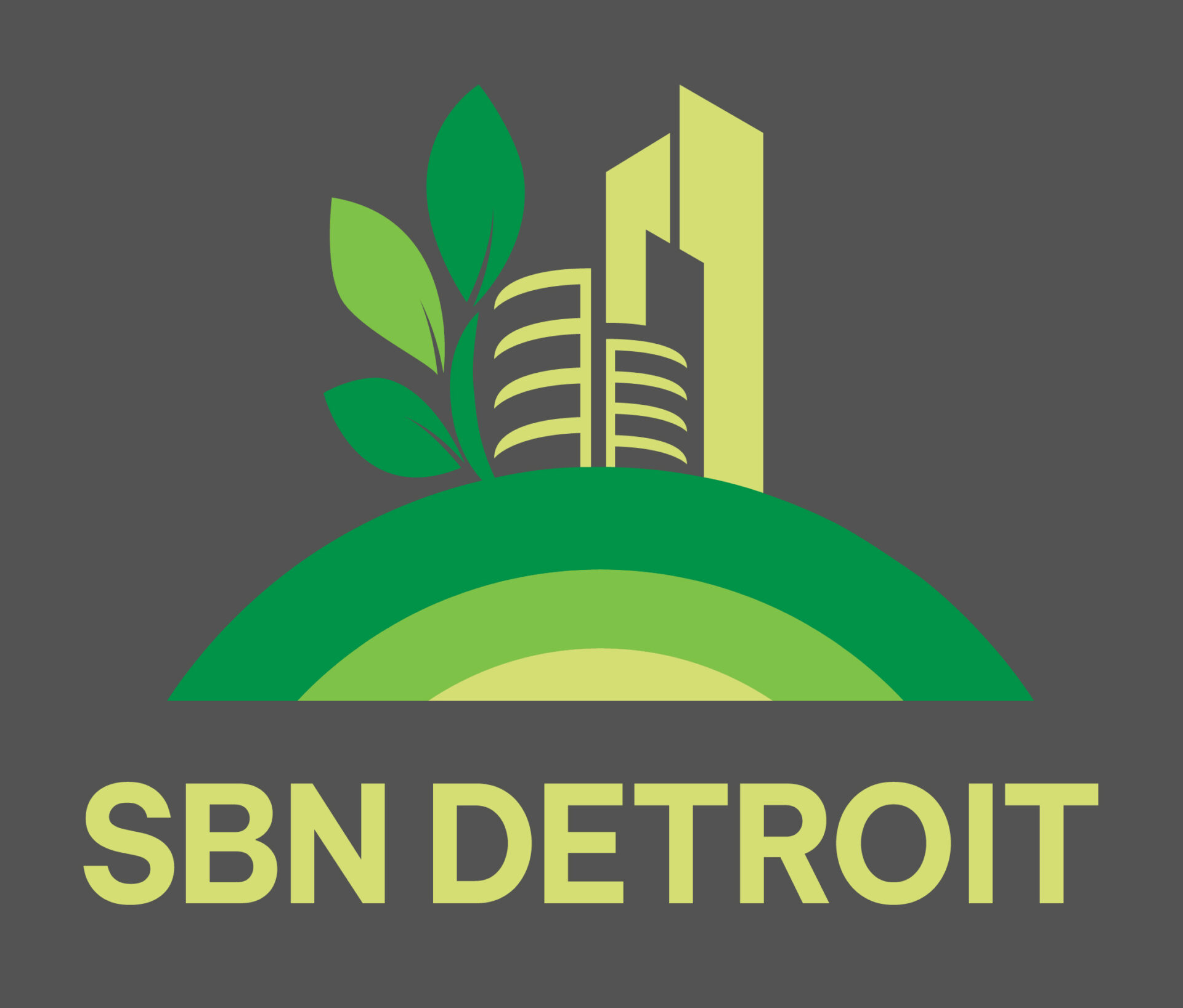Bosch to Invest $13.7 Million in Hydrogen Research and Development Hub in Farmington Hills

Hydrogen technology is gaining attention as a potential solution for reducing carbon emissions and supporting clean energy initiatives. Bosch is expanding its research and development efforts in Michigan with a new hydrogen hub, supported by the Michigan Business Development Program. The project focuses on advancing fuel cell and hydrogen engine technology, with applications in transportation and other industries. SBN Detroit asked Matt Thorington, Engineering Manager of Hydrogen Stacks and Systems at Bosch USA, about the company’s vision for hydrogen, the impact of its new hydrogen hub, and the role Michigan plays in driving clean energy innovation. Q: Regarding Bosch’s commitment to advance hydrogen technology – what drives this investment, and what are the ultimate goals of the hydrogen hub? A: Hydrogen will play a role in a diversified mix of powertrain options in the future. Hydrogen is used in many other sectors, all of which, including mobility, will benefit from clean hydrogen production via water electrolysis. Our work at the Farmington Hills location underscores our commitment to advancing hydrogen technology, enabling us to deliver innovative solutions that support our customers’ needs and drive progress toward the hydrogen economy. Q: Given the Michigan Business Development Program grant, how important is the state’s support in facilitating innovation and expanding clean energy infrastructure? A: The addition of this hydrogen research and development space will help empower innovative developments throughout the hydrogen lifecycle, allowing for improved integration. This $13.7 million Michigan Business Development Program grant will enable extensive upgrades and restructuring of 2,200 square feet of existing space to support further development of the Proton Exchange Membrane (PEM) fuel cell power module and the Proton Exchange Membrane electrolyzer stack for hydrogen production. Q: Bosch has identified hydrogen as a key part of a diversified powertrain future. How exactly will the hub facilitate and support this? A: Fuel cells are highly efficient at converting hydrogen into electricity, and when powered by green hydrogen (produced via renewable energy), fuel cell electric vehicles offer a sustainable transportation solution with a low environmental footprint. With the fuel cell, Bosch is offering a solution – especially for long-haul trucks. Fuel cells have attained the technological maturity required for broad-based use, initially in commercial trucking. Q: What specific sustainability challenges does this hydrogen hub aim to address, both locally in Michigan and globally? A: Fuel cell vehicles produce only water vapor as a byproduct, making them a clean alternative to traditional internal combustion engine vehicles and contributing to improved air quality and reduced greenhouse gas emissions. Another bonus: fuel cell vehicles can be refueled in just a few minutes at hydrogen stations, offering refueling convenience similar to conventional vehicles. They also provide longer driving ranges compared to many battery electric vehicles, making them ideal for long-distance travel, thereby enabling the possibility to help decarbonize the ‘hard to abate’ sectors such as HD mobility, industrial, and power sectors. For applications that run for a long time at high loads, a hydrogen engine is an attractive solution that helps to enable decarbonization while largely maintaining the existing powertrain. Bosch is developing injection and ignition systems for both port fuel and direct injection of hydrogen, designed to enable OEMs to utilize approximately 90% of the existing engine and vehicle architecture, and quickly adopt the hardware to hydrogen fuel. The success of fuel cell technology and hydrogen engine technology is further buoyed by the hydrogen hubs in the U.S.. More applications will help these technologies to establish a foothold in key initial markets. Q: How will this project contribute to Michigan’s role in clean energy and hydrogen development? A: Hydrogen offers immense potential as a low-carbon fuel that can reduce greenhouse gas emissions, improve energy security, and drive economic growth. I’m thankful that the State of Michigan continues to invest in clean energy and hydrogen development. Q: What impact on jobs will this new hydrogen hub have? A: The Regional Hydrogen Research and Development Hub at Bosch’s Farmington Hills headquarters facility is anticipated to create 28 new jobs in mechanical, electrical and chemical engineering over a three-year period. Q: What are Bosch’s next steps in hydrogen innovation, and could we see further expansions or additional hydrogen-focused projects in Michigan? A: Fuel cell power modules are only the beginning for Bosch. Today’s engine and powertrain technologies, along with the corresponding vehicle architectures, provide a solid platform for the development of hydrogen engines, especially since a significant portion of existing development and manufacturing technologies can be re-utilized. The basic structure of the fuel, air, and exhaust system can be adopted from existing powertrain solutions. A hydrogen engine can do everything a diesel engine does, but on top of that, it can contribute to improved air quality and reduced greenhouse gas emissions. Although its efficiency is lower than that of a fuel cell when loads are light to moderate, it is more efficient for full loads. Be sure to subscribe to our newsletter for regular updates on sustainable business practices in and around Detroit.
The Green Business Lab Simulates Real-World Solutions Toward the Triple Bottom Line

The Green Business Lab, created by Samantha Svoboda, is a sustainability-focused simulation designed to help businesses tackle real-world challenges while measuring success through the Triple Bottom Line: People, Profit, and Planet. By immersing participants in scenarios that reflect real-world complexities, the lab aims to help organizations across various industries identify sustainability opportunities, develop actionable strategies, and drive meaningful change. SBN Detroit interviewed Svoboda to explore the pressing sustainability challenges businesses face and how tools like The Green Business Lab aim to address these gaps in a practical, results-driven way. Q: What inspired you to create a business simulation focused on sustainability? A: The inspiration began decades ago when I was finishing my MBA at the University of Michigan. I wanted to focus on environmental work. I met Professor Stuart Hart and worked with him for several years to start what is now called the Erb Institute. As I collaborated across disciplines at U of M I saw a major opportunity. Sustainability requires collaboration, however. Various disciplines and schools each had their own style, specialized knowledge, and vocabulary. Through this work, I realized we needed a way to bring people together to have meaningful conversations about sustainability. Later, when teaching at Georgetown University, my students pointed out that most of the case studies we were using highlighted the weaknesses in existing sustainability practices, not successes. These, and other conversations, helped me to clarify my mission – creating a tool that could simulate real-world challenges, uncover perspectives, and foster collaboration. The Green Business Lab is the result: a customizable experience that helps companies and individuals tackle sustainability issues in a tangible, positive, actionable way, enabling them to focus on people, profit, and planet. Q: How does the business simulation work? A: The Green Business Lab operates like a flight simulator for business sustainability, offering participants a dynamic and immersive learning experience. Participants form executive teams and are tasked with leading fictional companies within an industry resembling real-world sectors like transportation or mobility products. Their mission: to achieve financial, environmental, and social goals aligned with the triple bottom line. Throughout three business cycles, participants make critical decisions on product design, operations, technology, marketing, distribution, customer use, and end-of-life processes. Each choice is tagged with Sustainable Development Goals (SDGs), and teams must navigate leadership challenges involving environmental and social issues. They receive detailed reports on financial performance, environmental impact, and social assessments. Teams present their vision, strategies, and outcomes during engaging, facilitated debrief discussions. They develop written plans for how to apply what they have learned to their work. By simulating real-world scenarios, participants develop practical decision-making skills, align sustainability goals with business strategy, and gain insight from diverse approaches taken by competing teams. Q: What are the specific challenges or gaps in business education that you see? A: Sustainability requires navigating some potentially thorny nuances. Participants bring deeply ingrained perspectives, assumptions, experiences, and knowledge about sustainability to the table. This can make discussions complex and sometimes emotional. As I have observed teams over the years, I’ve realized these perspectives need to be shared and addressed for a team to come to a common understanding of how to proceed. It is like going slow to go fast. It can take time to reach a shared mindset, but once the work is done, progress is generally rapid. Additionally, sustainability is vast in scope. Over the years, the focus has expanded from issues like ozone depletion to plastics in our oceans, climate change, biodiversity, and social equity. It impacts every aspect of business – supply chains, operations, technology, marketing, governance, and stakeholder engagement. The Lab strives to address these challenges by providing a transparent and comprehensive experience that accommodates diverse perspectives. It’s designed to help participants understand the interconnectedness of sustainability issues while fostering discussions that move beyond surface-level understanding. Q: What are the most common sustainability challenges organizations face when participating in the Lab? A: Every company has unique challenges based on its industry and business model. For example, a coffee company like Starbucks might focus on how climate change threatens its supply chain, while a consumer electronics company may focus on product durability, repairability, and circularity. At a high level, many companies use the lab to build awareness and get their arms around sustainability and how to approach it in a holistic way. They also use it to signal that sustainability is a priority. And finally, it’s an opportunity for leadership to gather feedback from participants about perceived challenges and opportunities within the organization. Q: What kinds of strategies or insights have emerged from participants? A: One powerful example involved a company whose business model encouraged rapid product turnover, which inherently led to increased waste. During the simulation, participants recognized the disconnect between their business model and their sustainability goals, sparking a critical conversation about how to reconcile these competing priorities. Another insight relates to the triple bottom line – financial, environmental, and social metrics. Many participants come into the lab expecting a formulaic approach to sustainability, where they can calculate and compare certain outcomes. What they often realize is that sustainability requires balancing competing priorities and working collaboratively to find high-leverage solutions. Q: How does engaging with real-world examples impact participants’ understanding of sustainability? A: Real-world examples provide context and clarity. These examples help participants see the practical implications of their decisions. At the end of the simulation, teams present their strategies and outcomes. Despite starting with the same information, each team often arrives at different conclusions. This diversity of thought demonstrates that there are multiple pathways to sustainability, and the key lies in identifying the opportunities that align with a company’s values and stakeholder priorities. Q: What do you see as the biggest barriers preventing businesses from fully embracing sustainability practices? A: One major barrier is the lack of clear roadmaps. Sustainability is a broad and complex topic, and many organizations struggle to define what “fully embracing” it even looks like. Additionally, sustainability requires a shift in mindset and a willingness


